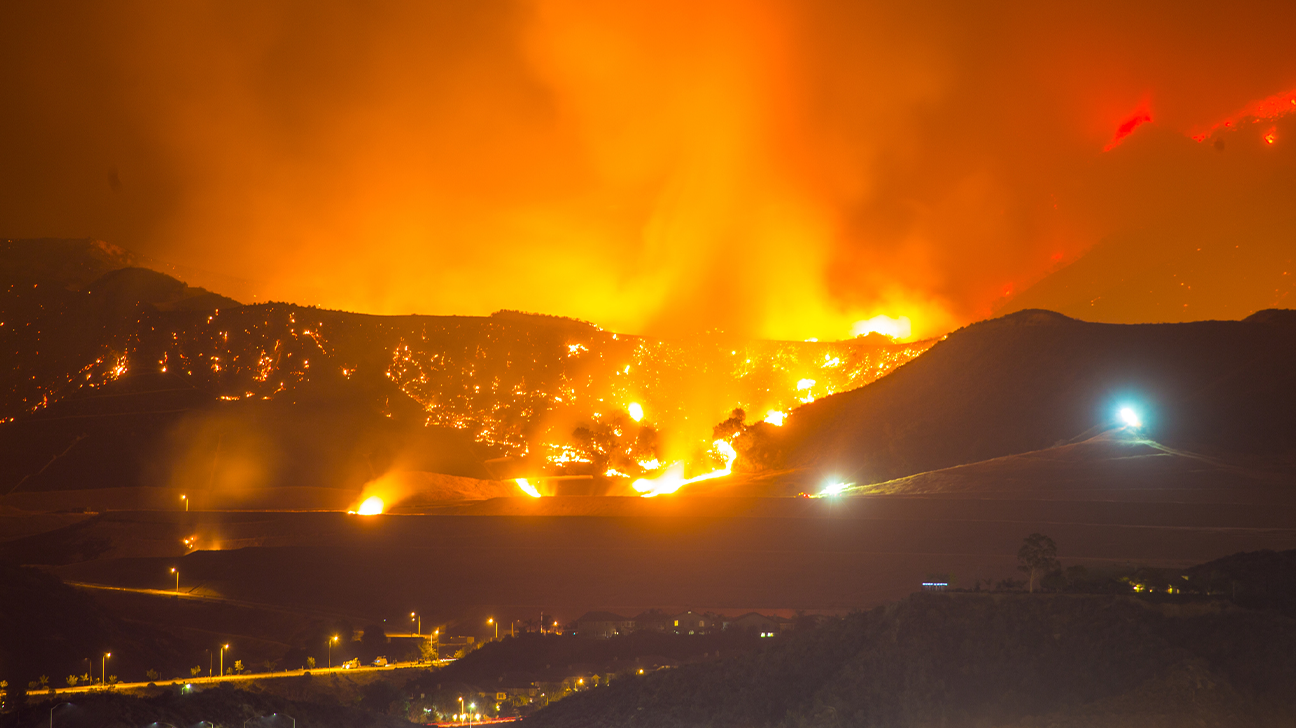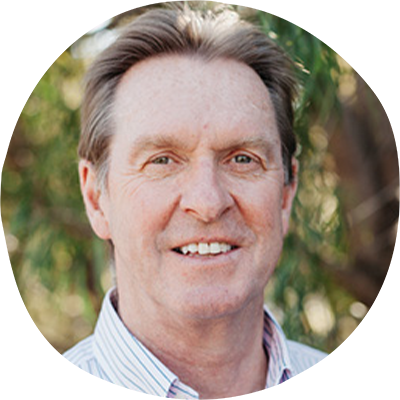California Wildfires and Mudslides Teach 'Diabetes Disaster Mode' Lessons

Rampant wildfires blotted out the sun, followed by torrential rains causing catastrophic mudslides, literally sweeping people away and claiming their lives.
Residents struggled to breathe outdoors, as sirens pierced the air and emergency responders combed the area -- turning parts of California into what looked more like a war zone than the lovely vacation spot it is known as.
Among those affected were some of our brethren living with diabetes, who on top of navigating emergency evacuations and risk to life and limb, also have to manage their own survival by assuring that they have what is needed to keep this volatile illness in check.
“It’s a complete nightmare,” said Dr. David Kerr, Director of Research and Innovation at the Sansum Diabetes Institute in Santa Barbara. “But it was also eerie that many were comforted, I guess, that somehow a total disaster had been avoided. Cars have ended up in the ocean, houses are demolished and there have been bodies on the beach. This is a wealthy area with a lot of Hollywood here, and now it looks like a solemn battlefield.”
These days, Diabetes in Disaster Mode almost seems like a new normal for many in our community -- from strings of hurricanes, to wildfires and earthquakes, and unpredictable cold snaps hitting the Northeast and many parts of the country.
This extends beyond the USA, of course, with natural disasters on the upswing in other parts of the world as well.
Sharing stories of the people involved is important, not only for empathy and support, but to understand the risks and hopefully glean some lessons from what they've experienced.
'A Never-Ending Disaster'
Dr. Kerr and his family live in the Montecito area, about a mile from the edge of the massive Thomas Fire, the largest recorded in California’s history, where subsequent flash-flooding and mudslides have wreaked havoc.

Kerr was evacuated for almost a week around Christmas because of the Thomas Fire, and luckily didn’t sustain any damage to his home. After returning home just before Christmas, air quality problems from the remaining fires, ash and smoke led to everyone having to wear masks for several weeks. Right around New Year's, the torrential rain led to the massive mudslides that have been captured in the news nationwide.
There were both mandatory and voluntary evacuations, and clearly, those who left earlier had more time to plan than those caught off-guard by the massive mudslides later.
Sadly, many people chose not to evacuate once the fire was contained, and went to bed thinking there’d be a lot of rain but nothing catastrophic. In fact, by latest count at least 20 people were killed, some of them in their sleep.
“If I look out the window, I can see helicopters buzzing around and the 101 freeway’s still closed,” he told us via phone during the first week of January, noting that at the time 17 were reported dead, 43 were missing and many houses still hadn’t been reached by emergency responders.
He also told us that the evening before, he saw a hearse driving on the expressway with police escorts. And then that day, the scene was ambulances with military vehicles passing by – “a never-ending disaster, with a continuous stream of sirens.”
Not only were many of his staff unable to get to work, but diabetes research participants have also been cut off from the institute due to the freeway closure. Some have traveled to work by boat or train, and most recently been escorted by special buses in the wake of these events.
"The stress must be just horrendous for those with diabetes," Kerr said. "Diabetes may not be the first priority in these emergency situations, and that just makes it even more difficult to maintain any shape of reasonable diabetes control. It's truly a catastrophe."
'The Stress of Not Knowing'
Longtime T1 PWD Sheri Colberg-Ochs, a diabetes and exercise expert, moved to Santa Barbara from the East Coast several years ago. She says that while she and her family are safe, the wildfires northwest of LA did influence her diabetes management. "The fire mostly affected my exercise patterns, but I was also worried about whether I had enough supplies."
She says she had her BG meter and test strips, other supplies and a full list of her prescriptions packed with other valuables, sitting near the condo door -- and was planning to just grab the refrigerated insulin on the way out if they were forced to evacuate for a week in December during the worst of the fires. But that luckily didn't actually materialize. Her family was in a voluntary evacuation zone, but opted not to leave.
The air quality issue was a problem, though.
"Due to the poor air quality, I literally didn't leave our house for 15 days straight (and that) made me way more sedentary than usual," Sheri says. "Luckily, we do have a fitness room in our condo complex and I was able to get into that most days, except when the smoke was the worst, even inside the fitness room. I could not swim outdoors for a month. That made my BG control a bit harder, along with the stress of not knowing if we were going to have to evacuate."
Once the mudslides began, some miles away in Montecito, there was even more uncertainty and stress.
"The mudslides led us to get emergency evacuation warnings on our cell phones at 3:30 a.m. and caused lack of sleep, but we personally haven't been that badly affected by those since our condo is safe," she says.
Previously, she hadn't kept a traditional "go-to bag" ready with diabetes supplies, but that's something she will now start doing going forward.
"You just never know," she says. "It's better to be prepared in case these situations come up quickly."
'I Learned to Be Prepared'
Another longtime type 1 impacted is diabetes media consultant Peg Abernathy, who lives northwest of LA, in the Fillmore wildfire area. This was not her first brush with disaster, having lived through a major earthquake several decades ago. That experience taught her to always have a bag ready, with her keys and diabetes supplies inside
"Being in Southern California, it's not just fires and mudslides, but earthquakes and everything else. To that end, what I learned is thanks to the big 1994 earthquake we had here. We were trapped in our house, with it leaning a bit and the doors and windows were jammed, and we ended up living out of our cars for two days... After all that nightmare, with wildfires over the years, I learned to be prepared."
Peg says she now keeps a fully packed duffel bag in a special cupboard in the house -- ready to go with syringes, supplies, snacks and other items she may need. She keeps her insulin in a little tin in the fridge, also ready for quick easy, grab-and-run access.
This was the first time she had to formally evacuate her home and needed that diabetes go-bag. With plenty of advance warning, she was able to take enough insulin to last her a couple of months. They were in a voluntary evacuation zone, and were able to return safely after a week because their house was largely protected.
"I learned the hard way, and this last time was the first I'd had the bits and pieces all together and my plan went without a hitch," she says, noting that she was thankful for having a chosen a brightly colored bag that was easy to spot during the chaos; they had to load the car up twice due to the fire and mudslide evacuations. "It was easily identifiable if I looked in my car and saw it was there."
She was also thankful to see many individuals, along with local ADA and JDRF chapters, helping people connect for supply or medication needs. "The D-Community came together."
Improving Diabetes Disaster Prep
Still, according to Kerr, the D-Community does not have a sufficient infrastructure set up to react to these emergency situations.
Yes, in-the-moment relief is important, with national orgs like Direct Relief working hard to get emergency and health workers where they need to be. And both grassroots and larger organizations step up to help people, too.
The Diabetes Disaster Response Coalition (DDRC) is also on hand, directing people in our D-Community to resources at Red Cross and beyond. For those impacted by CA fires and living with diabetes, this coalition of multiple diabtes orgs has formed a helpline (1-800-DIABETES) for you to call about assistance, supplies, and D-specific needs in times of disaster like this.
Then the topic of emergency preparedness infrastructure typically gets discussed briefly after a natural disaster strikes -- much like it did after Hurricane Katrina plowed into New Orleans in 2005, and after the string of hurricanes and tropical storms caused incredible devastation on the US mainland and nearby islands last year. But the passion for improving infrastructure and long-term planning often seems short-lived.
"No matter where you live in the world, disaster can strike. I think the Diabetes Community needs to think about giving people the know-how to have that emergency preparedness somewhere they can access very quickly, if there's no real time to plan ahead," Kerr says.
He plans to adds some advice to Diabetes Travel website run by the Sansum Institute. Currently, the site allows PWDs to plug in their own personal diabetes treatments and medication regime, enter how long they'll be traveling, and get a general gameplan on what to take and how to prepare for their time away. Kerr believes it's now necessary to add in a diabetes disaster preparedness component as well.
Beyond that, he'd like to see a centralized diabetes registry -- particularly in areas prone to natural disasters -- that would allow healthcare professionals to be able to pinpoint where possible impacted PWDs are located in order to let emergency responders know where to search first.
“Going forward we need to highlight the potential impacts of climate change for people with diabetes. Maybe that's the positive we can take from these types of situations, to start those kind of discussions," he says.
In the meantime, there's been an outpouring of gratitude for the responders on hand who did rise to the occasion.
For example, D-Dad Flint Ogle in Santa Barbara shared on Facebook:
"This morning I went to the parking lot of our local Vons market -- a staging area for all of the responders worked by on our local mudslide disaster -- hoping for an understanding ear. A local firefighter escorted me to our house in an evacuation zone, to gather supplies for our diabetic son... He offered to help and encouraged me to take my time... I certainly stumbled into the right guy! A credit to the profession and uniform. These guys are amazing."
We echo that thought, and only hope these experiences will spur learnings and planning, to help us be ready for anything in the future -- even the most dire of circumstances.
Article originally appeared on DiabetesMine in January 2018.
Comments